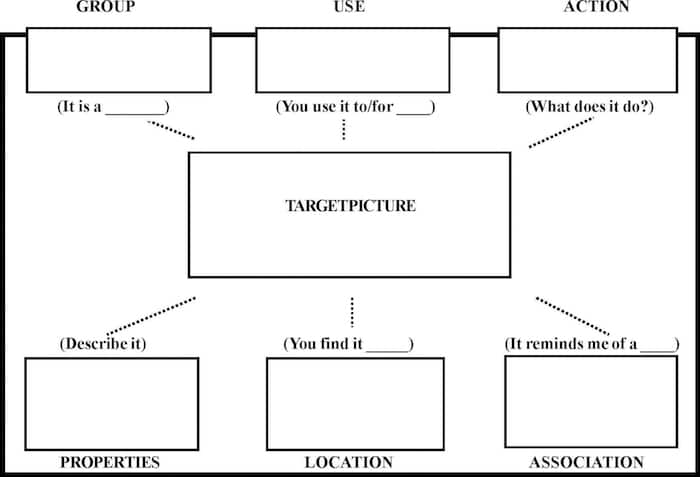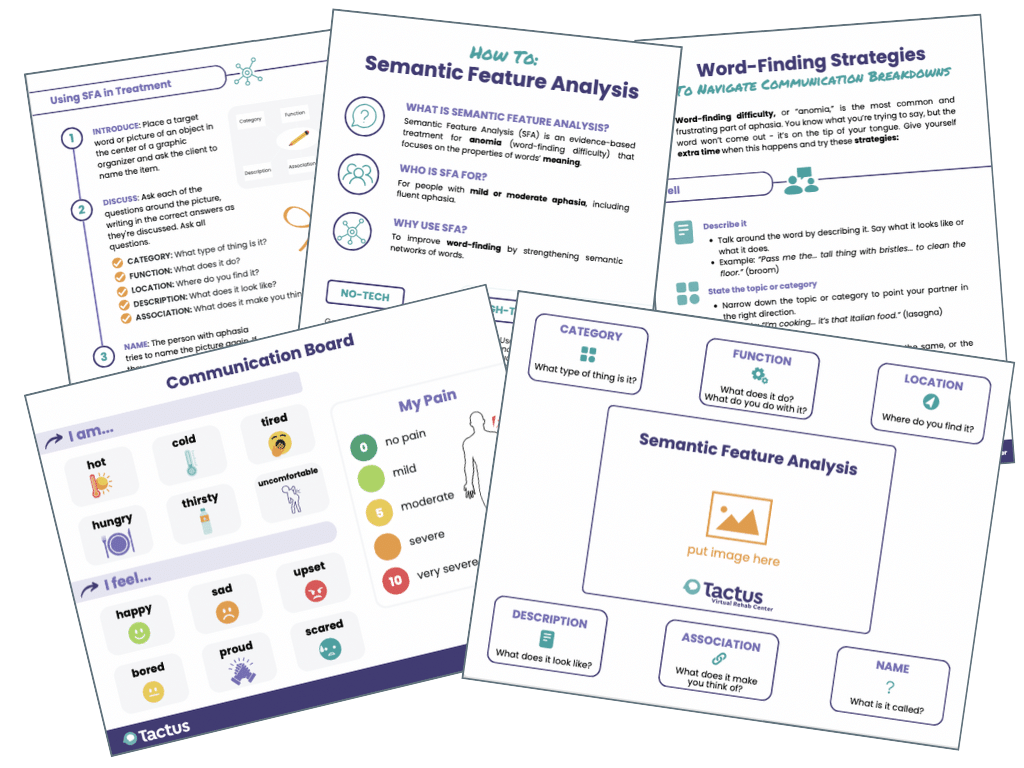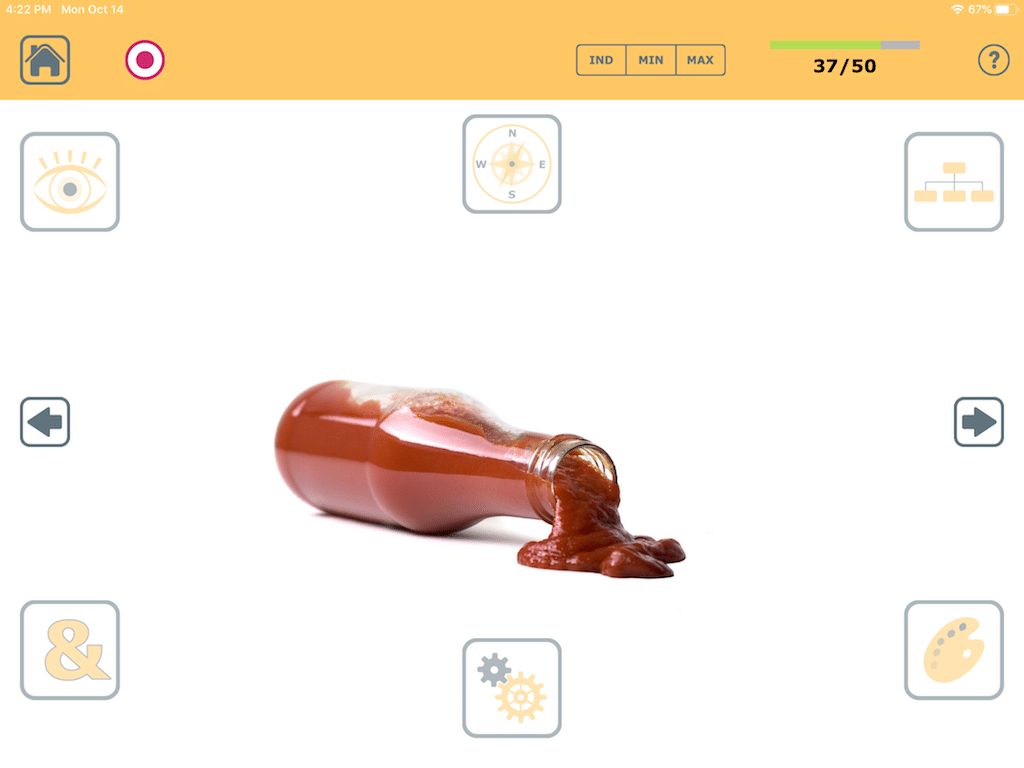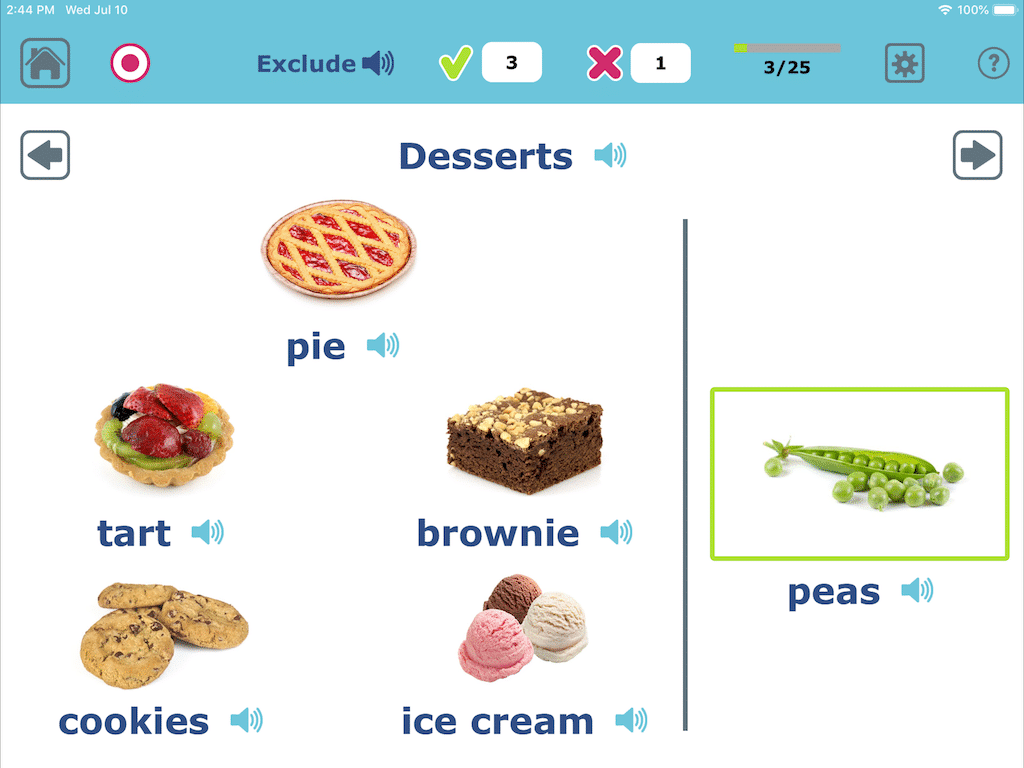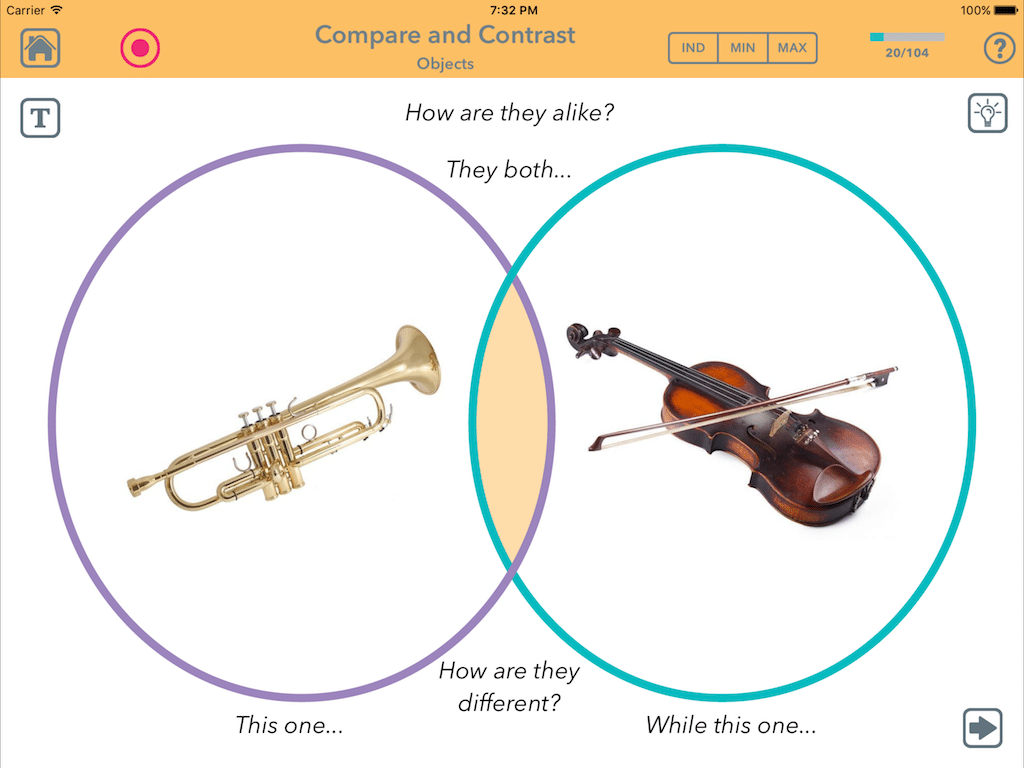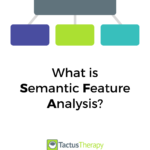How To:
Semantic Feature Analysis (SFA) for Anomia
6 min read
You’re talking to your friend about the most amazing fruit you ate on vacation. You can’t remember the name of it, but it was green on the outside with orange fruit inside, filled with little black seeds. It was sweet and juicy, and it grew on a tree outside your hotel. As you describe it, the word pops out of your mouth – “papaya!”

For people with aphasia, trouble finding the words they want doesn’t just happen for unusual or new words, but for common ones too. This frustrating problem is called anomia, and there are a number of speech therapy techniques that can be used to help. One highly effective treatment is called semantic feature analysis, and it works a lot like the example above.
The Treatment: Semantic Feature Analysis
Semantic Feature Analysis (SFA) is a therapy technique that focuses on the meaning-based properties of nouns. People with aphasia describe each feature of a word in a systematic way by answering a set of questions.
SFA has been shown to generalize, or improve word-finding for words that haven’t been practiced. It is based on the spreading activation theory that suggests activating the neural networks surrounding a word will strengthen the target word, similar to the VNeST approach.
SFA works best for people with mild or moderate aphasia, as well as those with fluent aphasia. It requires strong cognitive skills.
Looking for Printable Resources?
Unlock the Resource Vault
Dozens of high-quality, well-researched PDF handouts are available all in one place: The Tactus Virtual Rehab Center!
An SFA map, home practice, patient education, visual supports, a summary of this article for quick reference, & more!
Sign up today for a risk-free 21-day trial of this innovative web-based therapy platform for SLPs.
Access 45+ evidence-based treatments and 80+ resources created specifically for adult medical speech-language pathologists.
Semantic Feature Analysis for Verbs
The SFA approach can also be used to help retrieve verbs. The only thing that changes are the questions you ask in Step 3:
- Subject: Who usually does this?
- Purpose: Why does this happen?
- How: What part of the body/what tool is used to make this happen?
- Location: Where does this happen?
- Association: What does it make you think of?
- Properties: What does it look like?
Semantic Feature Analysis Variations
Researchers have studied a variety of adaptations to expand SFA that you can try in your treatment:
- Use the word in a sentence after naming all the features.
- Discuss the semantic features in a small group or with group feedback.
- Describe the picture to a partner who cannot see it (barrier task). They must guess what the picture is based on the semantic features.
- Elaborate on the answers, making complete or longer sentences.
- Think about each feature, one by one, instead of answering aloud. Then name the picture.
- Choose words for SFA based on word-finding errors identified in a picture description task, story re-tell, or procedural discourse sample.
- Select the features from multiple choice options, or answer yes/no questions about each feature.
Circumlocution: SFA as a Communication Strategy
SFA can be used as a strategy in conversations with family and friends. It’s often called circumlocution, meaning to talk around the word, just like the semantic features go around the picture.
When a person with aphasia struggles to think of a word, conversation partners can ask, “Can you describe it?” If more help is needed, they can prompt, “What kind of thing is it?” or “What is it used for?” to help get more information about the word.
Describing the word may or may not bring it out, but it contributes more information to the conversation. It’s often more successful than struggling in silence, and it provides a structure for the guessing games families often end up playing.
Evidence and Resources for Semantic Feature Analysis
SFA has been discussed in the speech pathology literature since the 1980’s. There are now many journal articles describing the procedure and modifications of the procedure, along with the results of research studies showing the effectiveness of the technique. In general, the technique has been shown to be highly effective with good generalization and maintenance.
- Mary Boyle’s 2010 review of the evidence of studies using SFA to generate and/or review features offers a good academic overview.
- However, the studies are small and the procedures are not always the same, as this 2014 review points out. More research is always needed.
- For students and clinicians, there’s a handy guide to SFA by Recipe SLP available for download on Amazon. This e-book provides a realistic example of how a SFA session might go, along with many variations of the technique that have been published.
- The Communication Therapies for Adults blog has a more technical overview of the SFA technique and evidence.
SFA Software in the
Virtual Rehab Center
Semantic Feature Analysis is an interactive digital treatment in the Tactus Virtual Rehab Center.
Patients answer questions, see sample responses, and score themselves. A video avatar provides a model of the correct name on the final question for repetition.
Get access to more than 40 evidence-based treatments & dozens of PDF handouts available for SLP members.
Sign up now for a risk-free 21-day trial of this innovative web-based therapy platform for SLPs.
The treatments and resources are created specifically for adult medical speech-language pathology. Join today and your patients can do homework for FREE!
Semantic Feature Analysis Using Apps
SFA is the foundation of the Describe activity in the Naming Therapy app. You’ll see 475 clear photos of nouns with 4-6 carefully selected questions surrounding each one. Select only the Verbs category to work on 107 action words with the 6 verb feature questions.
Press each button to hear a question. Answer all the questions to create a complete description of the word. Touch the picture to hear the word anytime. Select the Meaning cues in the Settings to ensure you only see the SFA-based cues.
With Naming Therapy, you can add your own pictures, selecting the SFA questions you want for each word. And you can use the app in Spanish, French, or German. Using this evidence-based app makes it easy for people with aphasia to practice SFA intensively at home, and keeps this evidence-based treatment approach close-at-hand and top-of-mind for busy clinicians.
Naming Therapy
Say the right word more easily when you learn the strategies that help you communicate with this popular word-finding app.
Step Down: For those who struggle to answer the questions, the Category Therapy app for iOS and Android can be a helpful tool to practice sorting into categories and identifying shared features.
Category Therapy
Strengthen connections between words with flexible exercises to improve language and reasoning skills.
Step Up: For higher-level work on semantic features, try Advanced Naming Therapy. The Compare activity encourages users to compare and contrast items based on physical features or semantic qualities.
Advanced Naming Therapy
Express yourself better with challenging word-finding exercises for aphasia and cognitive-communication problems.
Download this How To guide now
Get all the information in this article in a handy two-page PDF for your reference, ideal for families. SLPs are encouraged to use the Virtual Rehab Center to access all guides in the Resource Vault.
In addition to receiving your free download, you will also be added to our mailing list. You can unsubscribe at any time. Please make sure you read our Privacy Policy and Terms & Conditions.
